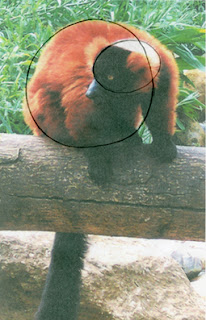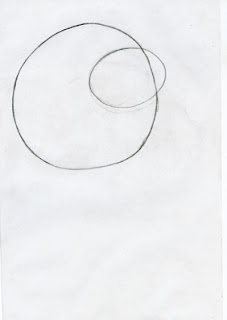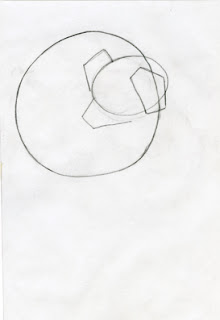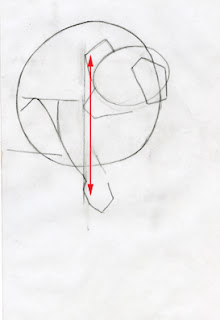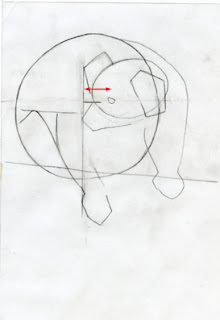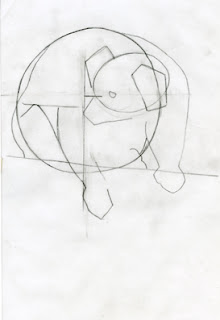Getting there!On Wednesday evening I drove over the bridge to Undy. A friend of mine, who lives there and attends the local art group, had set up an evening for me to do a ‘demo’ to the small but enthusiastic group. Of the options given they chose pastels as the medium that I would do the demo in.I had spent about 4 days thinking and planning what piece I would do for them. I have a commission in pastel coming up, so thinking I could combine the two, I had been working on drawing up and preparing that idea. However, it was late on Tuesday evening when I realised that the A3 piece would be too small to do the demo with… they just would not see what I was doing when I stood in front of the group working on an easel. Why I hadn’t thought of this before…goodness only knows! Now it left me in a bit of a muddle.
After a little thought I decided to do a lion head and searched for a piece of pastel board or paper of the right size and colour to use. Of course, Murphy’s Law made sure I had nothing suitable in my possession. I would have to go out and buy some the next day… the day of the demo…. Nothing like doing things last minute!
As the art group met early in the evening, I had arranged to have the afternoon off from the zoo so that I could get home, change and freshen up, pack up the bits and bobs in my car and make my way unrushed over to South Wales. Of course… that little plan has now changed!So straight from work I nipped across to a local art supplier and found what I was looking for. Rushed home to draw out lion's head.. only to find once I had drawn it out and started to work into it that I had drawn the darn lion on the wrong side of the paper!!!! Arrgghh!!So with the pressure mounting as time was fast approaching to when I would have to leave, I quickly traced off what I had drawn and started again on the reverse side of the paper. I had originally planned to have a goodly amount of the pastel done so that they could see some finished work as well as watch me add more. However, I managed only to get one ear done before I had to pack all away to load up my car, sort out an overnight bag (I was staying at my friend’s house that night), freshen up, change clothes and get myself on my merry way!
Living just minutes from the M32 in Bristol, when I left I should have been in fairly good time to arrive at my destination…… that was until within ¼ mile of my house I joined a nose-to-tail queue of traffic that stop started it’s way to the M32. What should have taken me less than 5 minutes took nearly ½ an hour due to an accident just beyond the sliproad down onto the M32.Once past this, the traffic moved fast and freely until I got to the other end of the M32, where I joined another slow moving queue to get onto the M4. By this time I had gone beyond tearing my hair out and sat passively numb biding my time whilst inside my stress increased as I saw my arrival at the art group becoming later and later. Not a good impression to make for a first booking! Only after the junction for the M5 did the traffic heading to Wales thin out and move at a decent pace.I was hoping to arrive about 5.30pm to set up, as my friend had said that would be the time the organiser of the group would be there. When I arrived at 5.50pm it was to great relief to find that the organiser had only just arrived herself to unlock the church hall where the group hold their art meetings.The demo itself….The evening went very well, I think. There were just 12 ladies but they are very enthusiastic and lovely to chat to. I quickly felt quite at ease with them – they are a lovely group. Not many of them had played with pastels – one reason being how messy they are and they certainly hadn’t done much, if anything, in the way of animals. But I hope I have taken away a little of the uncertainty about trying either in the future.
I was using CarbOthello pencils (by Schwan Stabilo) which are pastels in the form of a pencil. The pastel is very soft (very much like charcoal), lightfast, luminous and very easy to blend and smudge. Apparently you can use water with them, though I’ve never felt the want to try this as yet.In the tea break, a number of them tried out the pencils I had and were impressed by the smoothness of them; some, like me, find other brands of pastel such as Derwent to be a little too hard and scratchy for their own personal liking; and that had put them off using them in the past.Although I didn’t actually get much more done to the lion, from what I could tell, the group liked the slow approach as they could follow my progress better and ask questions about what I was doing at any point, quite easily. The time sped by very quickly and aware they had a ‘cut off time of 8.30pm, I said, thinking that it was about 8pm, that they should just tell me to stop when they needed to start packing up. The organiser said.. well actually it’s 8.30 now. (!!!!)This is as far as I got.... I hope to post the finished pic once it's done. I’m very glad to say that after a stressful time prepping for and getting to the Demo… it turned out to be a lovely relaxing, friendly evening with a great bunch of people. Thank you once again to the lovely ladies who made me feel so welcome.
I’m very glad to say that after a stressful time prepping for and getting to the Demo… it turned out to be a lovely relaxing, friendly evening with a great bunch of people. Thank you once again to the lovely ladies who made me feel so welcome.




